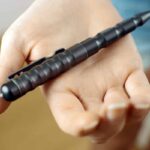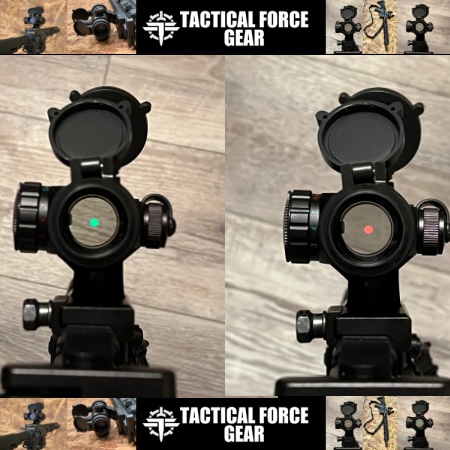Pretty much everyone agrees that 12 gauge stops threats in their tracks. Unfortunately, large bore shotguns come with heavy recoil. Those guns that tame the kick usually come with excess weight, at least for the smaller statued and weaker defenders. 20 gauge shotguns are often recommended as effective enough but with less bulk and kick. As an enthusiastic user of 20 gauge guns, I’ve spent decades fine-tuning the ammunition selection for the best defensive effect.
At first glance, external ballistics appear to be quite similar. 20 gauge shotshells are available either with less lead than 12 gauge but at similar velocity, or with the same projectile loaded to a lower velocity. Velocity difference of just under 20% yields energy difference around 40%, definitely lowering felt recoil even in slightly lighter guns.
Top 20 Gauge Ammo for Home Defense
If you’re looking for a product recommendation, you’re in the right place. Here are some of our top options for 20 gauge shooters who are looking for a home or self-defense round.
Best Overall 20 Gauge Ammo for Defense: Winchester Defender 2 3/4″ #3 Buck
Top Budget-Conscious 20 Gauge Defense Ammo: Aguila 2 3/4″ #2 Buckshot
Best 20 Gauge Slug for Defense: Federal Power-Shok 7/8 oz.
Testing 20 Gauge’s Viability for Defense

A Remington 1100 Youth semiauto, Mossberg 500 Bantam pump, and ATI SxS Road Agent served as our test guns. The difference in recoil was especially prominent with the SxS, being far less in the 20ga Road Agent than in a similar 12ga shotgun. The short action and 5.3 pound weight make it easy to handle, smaller gauge and a thick recoil pad keep recoil down to a reasonable level. The 500 and the 1100 are downright comfortable to shoot even with slugs.
What About Birdshot?
While we fired quite a bit of birdshot just to get used to the guns, it’s not suitable for defense due to low penetration. The real contenders are slugs and buckshot.
In 12 gauge, 00 and 0 buckshot usually comes in a cup wad, keeping groups tight. Federal 8-pellet 00, the gold standard of scattergun loads, can stay inside a torso width out to 20 yards or so.
Smaller 20ga shells cannot fit 0 or 00 buck efficiently, so the options we had were unplated Aguila #2 Buckshot with 15 pellets or smaller plated Winchester Defender #3 with 20 pellets.
Testing 20 Gauge Ammo for Home Defense With Ballistic Gel
With nominal velocity of 1220 feet per second, slightly less from the 18.5″ barrels, unplated Aguila pellets turned in a respectable performance: 13 to 15 inches of gel penetration, with slight pellet deformation. With a lower nominal velocity of 1145 feet per second and plated projectiles, smaller Winchester pellets penetrated 12 to 14 inches with no deformation, still quite respectable. I would rate their terminal performance as very similar.
Plated vs Unplated
The difference between plated and unplated projectiles showed up more in the patterns: buffered and plated, Winchester load spread slightly less. However, for shooters used to the tight patterns of premium 12ga buckshot, 20ga would be a disappointment. Depending on the choke, cylinder, improved cylinder, or modified, both loads spread torso-width by 6 to 8 yards. Winchester had about one yard advantage on Aguila, but the difference wasn’t decisive. In a small apartment, 20 gauge would work very well, especially with an improved cylinder choke. Out on the farm, ranges longer than ten yards call for slugs.

Once upon a time, I compared several 20 gauge slugs, and got two extremely different results. 5/8oz Remington Slugger fragmented spectacularly, with just 7.5″ of penetration. Current loads offered by Remington are an even faster 1/2oz and a slower 7/8oz, the latter more likely to hold together. The lighter Slugger won’t overpenetrate the foe, provided good aim — whether the shallow but wide wound would be a stopper, we can only guess. At the other extreme was a Brenneke slug, perfectly suitable for deer but featuring only a slight expansion and massive over-penetration. The new load tested, Winchester 3/4oz 1600fps hollow point slug, proved ideal for antipersonnel use: perfect 7/8″ mushrooms rested at the end of 15″ wound tracks. The obvious caveat with the slug is excessive penetration on common building materials, but the same exact feature make it tremendously more effective against windshields and vehicle bodies.
For those who like the concept of energy transfer, Winchester buckshot and slugs pushed the 17 pound Clear Ballistics gel block about 10 inches. Aguila buckshot pushed it nearly a foot.
Final Thoughts
Based on the data, I would rate both 20 gauge buckshot loads as well-designed for close range self-defense. Besides wide dispersion, there’s also the issue of rapid decline in velocity affecting smaller 24-30gr buckshot pellets more than than 54gr 00 balls. For longer distances than about ten yards, I would keep slugs handy, or stick to 00 buckshot in 12ga. The range limitations aren’t as problematic if the expected threat is smaller than humans. For a fast-moving feral or rabid canine, for example, wide spread can be a plus, while smaller individual pellets still penetrate sufficiently.
Read the full article here











